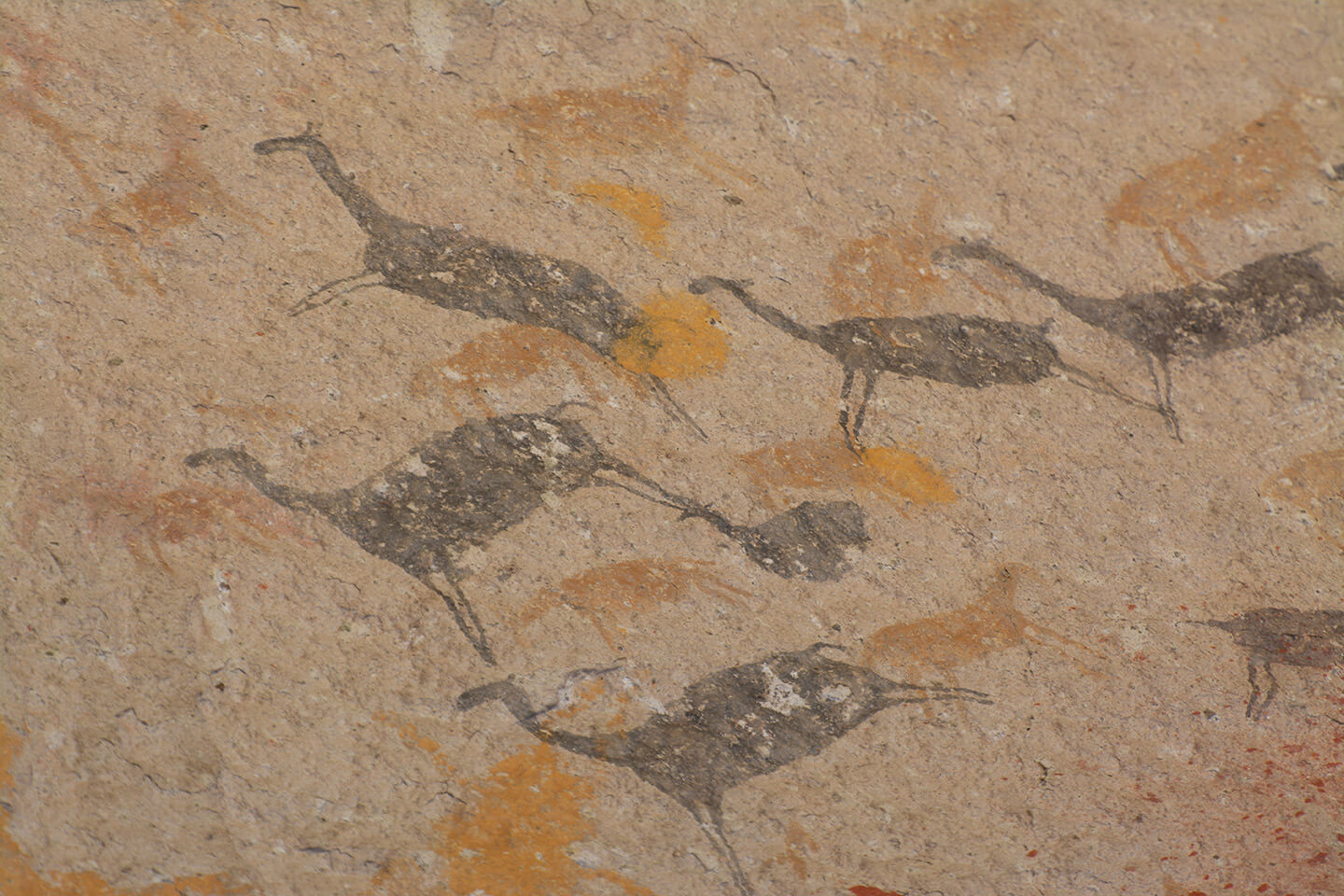Archeology
Archaeological discoveries and treasures
Archaeological discoveries give Patagonia a powerful singularity. Evidence of enormous cultural richness and value to humanity is available to visitors who come to the region. Surrounded by valleys, forests, canyons, and rock formations, they bear the traces of the most ancient inhabitants of our Earth. For 10,000 years, the ancient inhabitants of Santa Cruz left their mark in caves, eaves, and rock walls. “Cueva de las Manos” is the most notable example: a true sanctuary of rock art, declared a Cultural World Heritage Site by the UNESCO.

Guided tours lead to the discovery of 800 hand paintings and hunting scenes amidst the spectacular canyon of the Valley of the “Pinturas” River. Near the Cattle Ranch “La María,” 150 km from Puerto San Julián, other archaeological evidence can be seen in paintings dating back 12,600 years, in 87 caves and eaves along 12 canyons. The Carlos Gradín Archaeology Museum at the locality of Perito Moreno offers a tour of the history of Patagonia’s earliest inhabitants. Discovered by Expert Moreno in 1877, “Punta Walichú” and “Playa Bonita” are other examples of later rock art in Santa Cruz, with 4,000-year-old paintings, just 8 km from El Calafate.
In the province of Chubut, the Leleque Museum tells the story of the people who inhabited Patagonia: the changes in the societies that populated the territory, the conflicts, beliefs, and religious rituals are all part of a long history. A hundred meters from “La Trochita” railway and at the foot of the Andes Mountain Range, various vestiges of the indigenous people who inhabited these lands can be appreciated by visitors nowadays. Other sites of archaeological interest included are the Piedra Parada Natural Area, Piedra Pintada in Epuyén, and the “Cerro Pintado” in Cholila.

At the Lihué Calel National Park in La Pampa, whose name means “mountain ranges of life,” you can visit a late rock art exhibition: the “Valle de las Pinturas”, with red and black geometric motifs dating back approximately 2,000 years.
The “Cerro de los Viejos” archaeological site is located in the northwest, 90 km from La Adela, in the department of Caleu Caleu. At 216 meters above sea level, this granite basement outcrop is the highest elevation in the region, amidst the Caldén Mountains. Between 17th and 19th centuries, a system of dams was built to improve water management. In these six dams, the indigenous people created a large water mirror, which allowed them to store water during cattle drives to Chile.
Various areas in the province of Río Negro boast important archaeological findings: the “Carri-Laufquen Grande” lagoon, the large caves of “Pampa Alegre,” and the rock paintings of “Cerro Bandera” are major attractions. Basalt formations with natural caves are prominent in “Angostura de Ñancucheo.” “Casa de Piedra” on the Maquinchao stream displays the remains of what was once a settlement of indigenous cultures, with rock paintings, and the imposing beauty of the “39” Canyon, with rock art next to a petrified forest. A seductive proposal for archaeology lovers. Also in Río Negro, enormous fossil conglomerates of marine remains can be seen at the “Cerro Catan Lil,” near the town of Ingeniero Jacobacci.
The territory of Tierra del Fuego was inhabited by nomadic hunter-gatherer societies. Numerous archaeological sites, either excavated or still under study, bear witness to the entire process of occupation by indigenous societies, which began more than 10,000 years ago in the north of the island and around 6,000 years ago on the coasts of the Beagle Channel.
